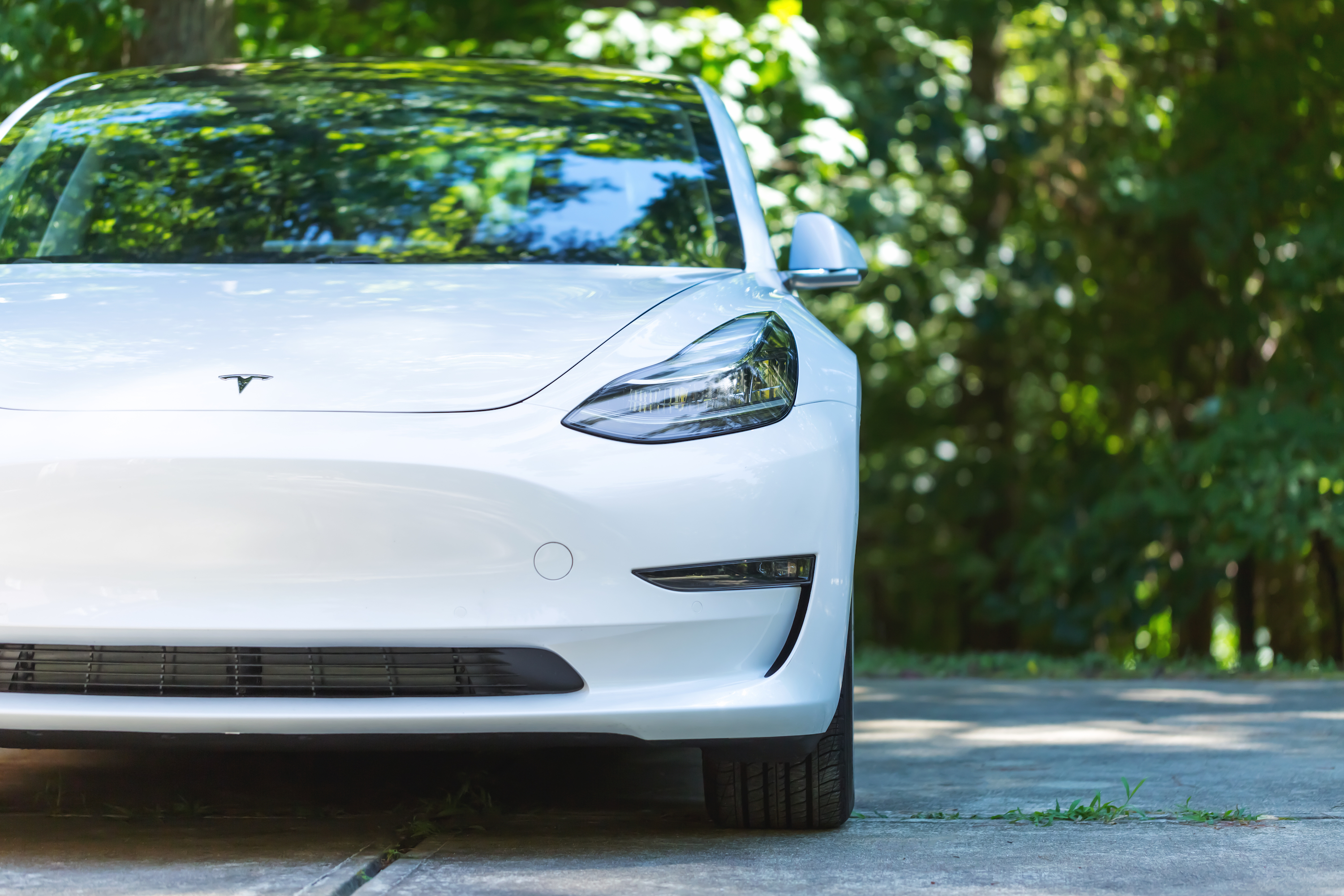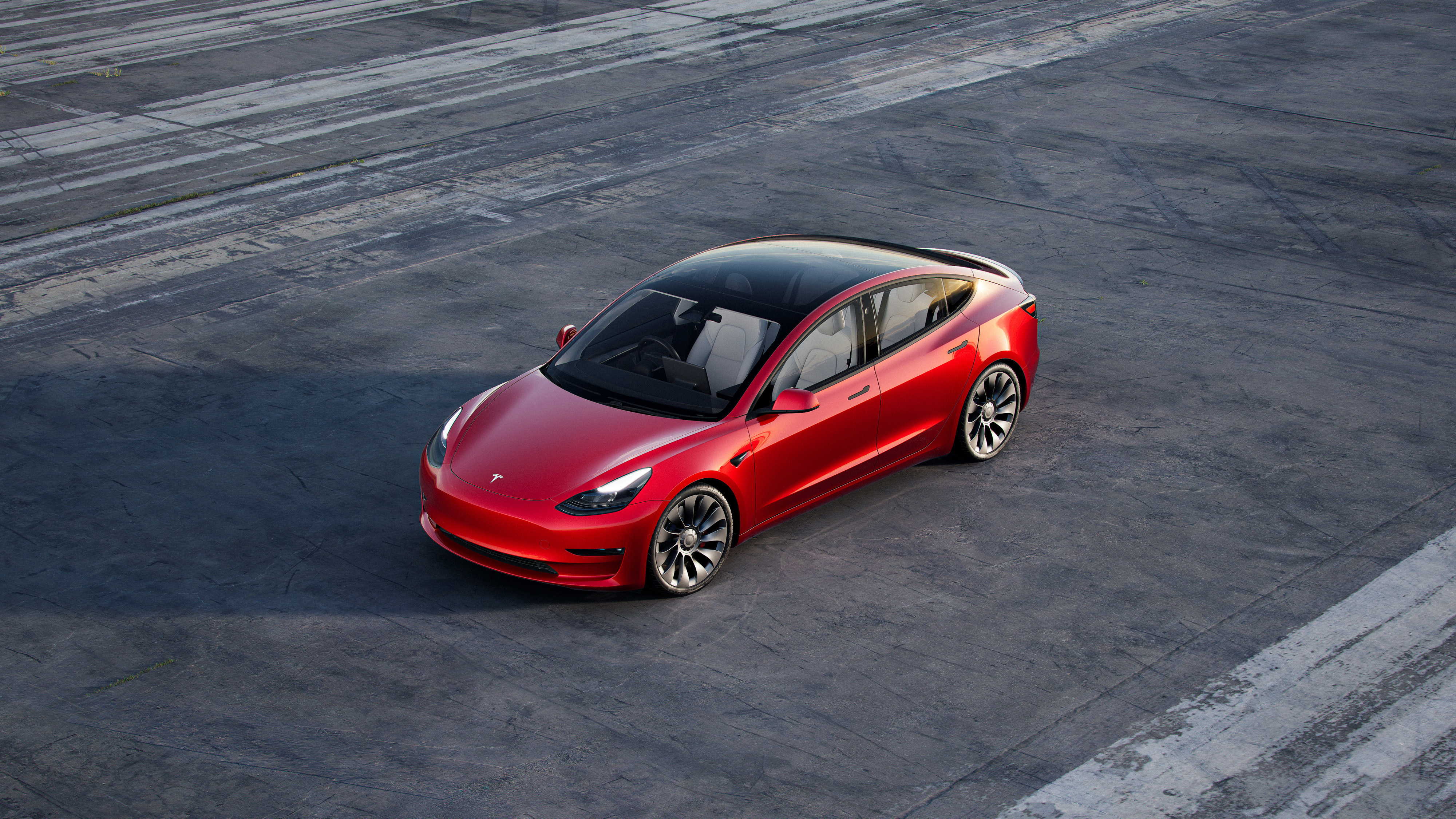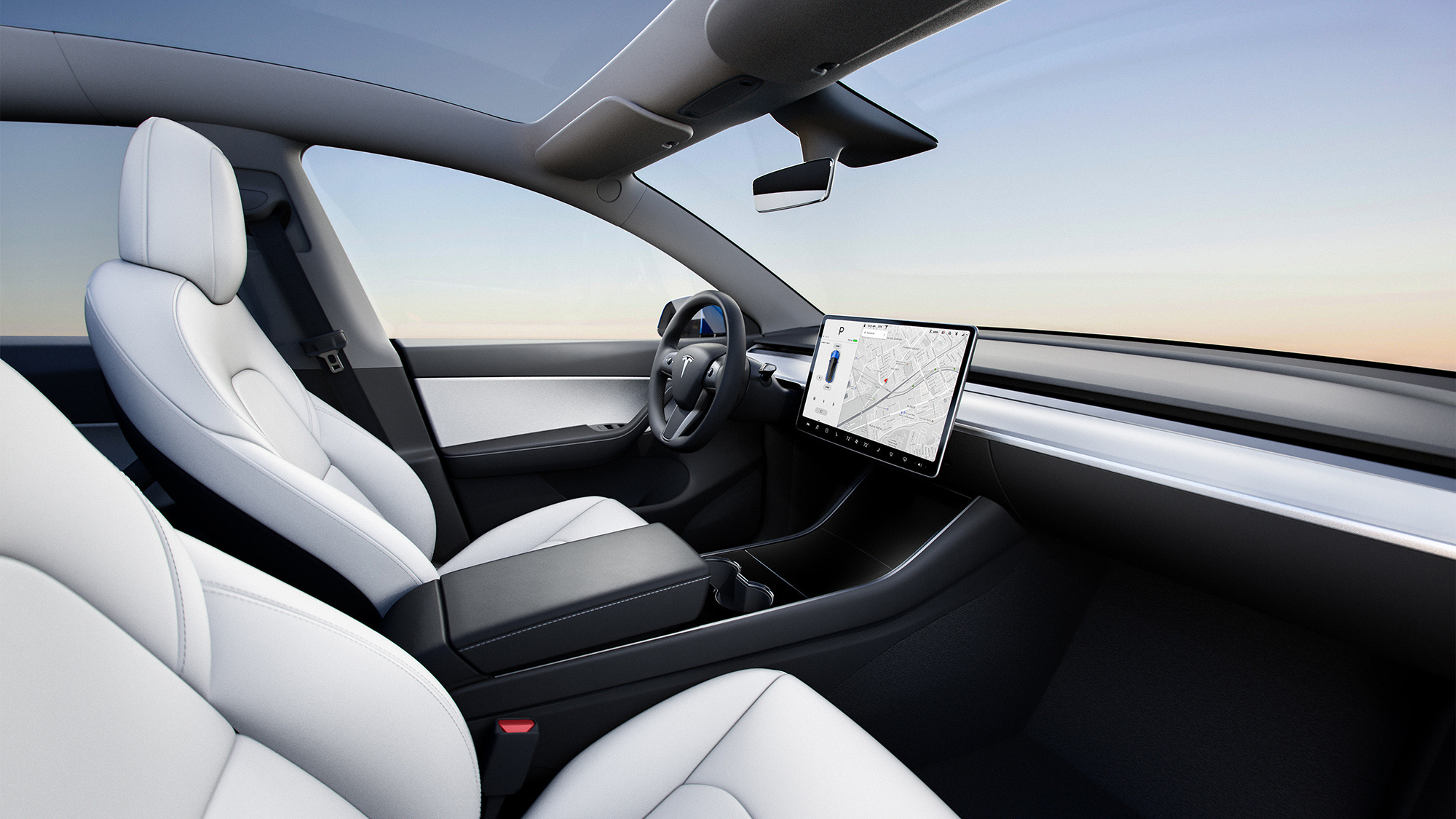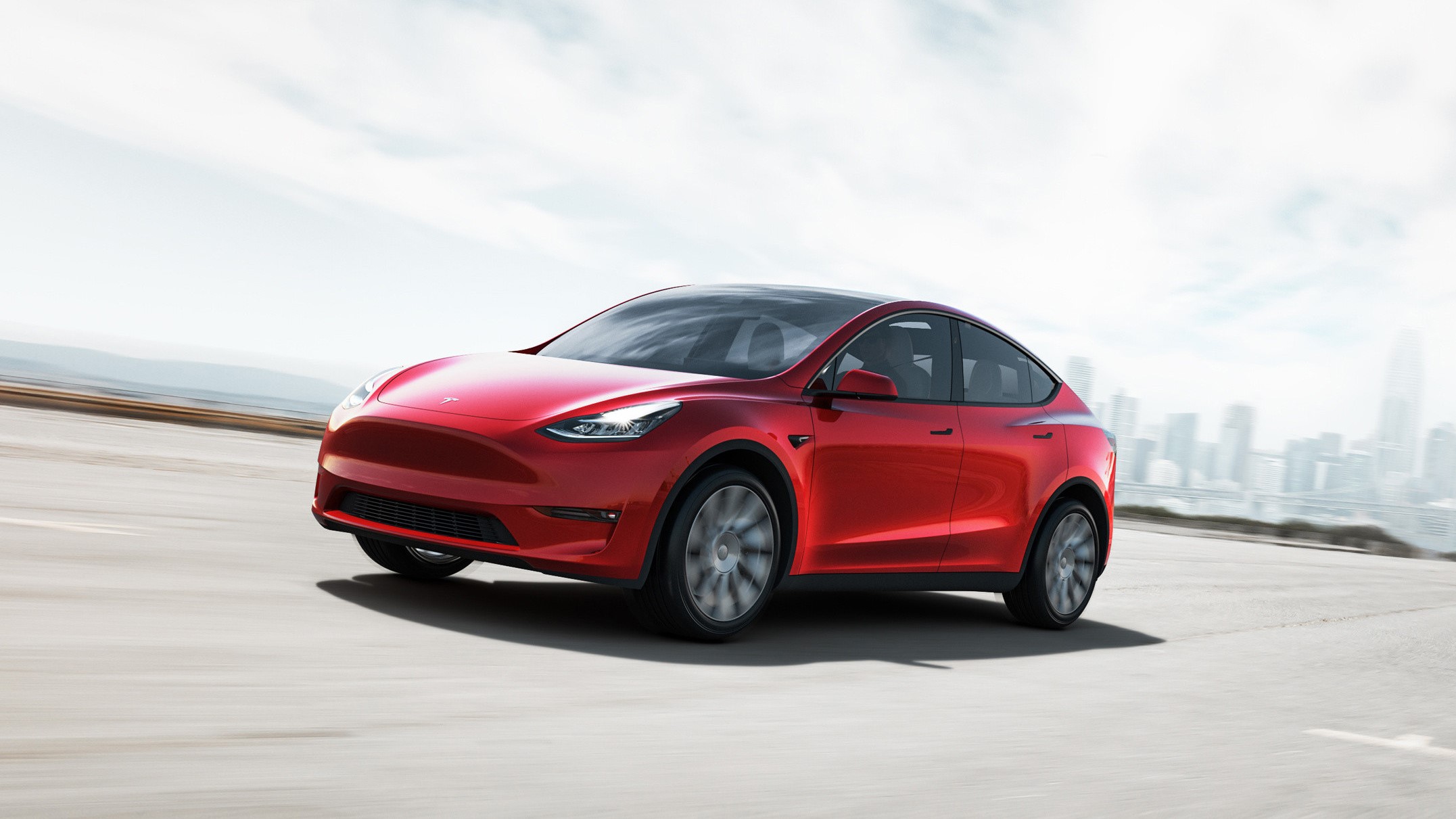The $25k Tesla hatchback is the only Tesla worth caring about
The Tesla Model 3 has had its day, and only the Tesla hatchback matters now

A week ago, Tesla announced it was adding a brand new car to its line-up, but this was no Model S Plaid or Roadster-level vehicle. Instead, it’s a smaller Tesla hatchback that’s set to cost just $25k.
This is a big deal. Not just for Tesla, but for the electric car industry as a whole. Frankly, it’s such a big deal that the Tesla Hatchback is the only Tesla worth caring about right now.
- Everything you need to know about the Tesla Hatchback
- Tesla Model S vs Tesla Model 3: What's the difference?
- Plus: Loki episode 6: Finale release date and time
Tesla made a name for itself selling electric cars as premium and quality vehicles, something that has worked out really well for them so far. But the hatchback shows Elon Musk's company is pivoting to offer something for a different group of people. And it's a group that probably didn’t consider buying a Tesla before.
Premium is good, affordable is better

Developing new technology is an expensive process, and electric vehicles are no different.
Even now, it’s something of a challenge to convince people that electric cars are viable alternatives to those running on an internal combustion engine.
Some 13 years ago, when Tesla’s first car went on sale, electric cars were seen as small and terrible, with ranges and recharging times that made them impractical. In contrast, the original Tesla Roadster promised a range of 200-250 miles per charge, and a 3 ½ hour charging time on a 240-volt connection. Those early models also cost over $100,000, the equivalent of $125,000 today, which is no small amount of money.
It's natural that a car maker producing vehicles in that price range would lean into the luxury side of things, because the only people who can drop that much money on a single car would expect it. If you’re paying over the odds for an unproven technology, you damn well better have enough to make it worth your while.
Sign up to get the BEST of Tom's Guide direct to your inbox.
Get instant access to breaking news, the hottest reviews, great deals and helpful tips.
But selling luxury cars can only go so far if you’re hoping for your cars to gain mainstream acceptance. Despite sticking with the pricier models for several years, it explains why Tesla made a massive change with the Model 3 in 2019. At launch, the cheapest model of the car was available for $35,400, which is significantly lower than any Tesla that came before it.
While the Model 3 has since risen in price to $39,990 before any subsidies or potential savings have been taken into account, it’s still the cheapest car in Tesla's line up. It quickly became the most popular Tesla, though it was recently usurped in the U.S. by the much newer Tesla Model Y crossover. The Model Y may cost $4,000 more, but it also offers an extra 60 miles of range, and has significantly more storage space.
In other words, as impressive as the likes of the Tesla Model S Plaid may be, it’s still the more affordable cars that are purchased in the greatest numbers.
Consistency across all cars is Tesla’s whole deal

The thing about the Tesla Model 3 and Model Y is that they still offer many of the same features as the much pricier Model S and Model X cars. The range may not be as good, and they may not be able to offer the same high acceleration or top speeds, but they are built to offer the same driving experience.
Each car has been built to have that same Tesla ‘feel’. From the upholstery to the infotainment system, it always feels like Tesla is trying to make sure everyone gets pretty much the same experience, no matter which car they buy. Even Autopilot, a feature you’d normally expect to be hidden behind a paywall, is available on the cheaper cars. Better still, it’s the same Autopilot on all four cars.
The Tesla Model S and Model X might get new updates first, or they may get the more frivolous features such as AAA gaming or the yoke steering wheel, but they’re all still Tesla cars.
While Tesla hasn’t offered many specifics about its hatchback, it’s safe to assume that the company will be applying the same philosophy to this car too — even if it is almost $15,000 cheaper than the current ‘cheap’ Tesla.
Cheaper Teslas are good for everyone

While there’s no shortage of low-cost electric cars these days, they can still be pretty expensive, especially if you want to pick one up with smart features.
A Nissan Leaf hatchback costs $31,670 if you don’t qualify for any federal credits, but that only gets you the basics: a 40kWh battery, ePedal, and that’s about it. That price doesn’t even get you a 50kW fast charging port, which is an extra $1,690. A model with all the trimmings, including the ProPilot driver assistance system, costs $44,920 before incentives — or the same as a Tesla Model Y.
Having a Tesla hatchback with all the Tesla-y things you’d get in any other one of the company’s cars, for $25,000 is an absolute bargain. Even if $25k ends up being Tesla’s ‘potential savings price,’ and the actual amount you pay is closer to $30,000, it still sounds like a great deal.
What we also know is that Tesla has built this car to be small and light enough to maximise the range by up to 14%. Better still it’s going to be building the car with a smaller, denser kind of battery, which promises to hold more energy in a smaller space — enough to extend the range by a further 16%. And as anyone who’s ever compared electric cars can tell you, range is where Tesla excels.
In fact, Elon Musk pulled the standard range Tesla Model Y from sale, because it only managed 244 miles on a single charge; according to the Tesla CEO, this is “unacceptably low.” Unless there’s been a major philosophy change in the past 12 months, it means the Tesla hatchback could well be offering one of the best dollars-to-miles-of-range ratios on the market.
That’s going to send would-be electric car owners flocking to Tesla to purchase one. Even I’ll admit that I’d be tempted, despite the fact that I plan on running my own electric car into the ground before I even think of replacing it. This would only spur Tesla's plentiful competition to try and undercut the company in any way they can, and offer their own high-range, low-cost electric cars.
The Tesla Model S Plaid may be fast and powerful, and both the Model 3 and Model Y may be cheap and popular, but they’re not what we should all be focussing on right now. Bring on the Tesla hatchback, because 2023 can’t come soon enough.
- More: Tesla Model X vs Tesla Model Y: Which Tesla is best?

Tom is the Tom's Guide's UK Phones Editor, tackling the latest smartphone news and vocally expressing his opinions about upcoming features or changes. It's long way from his days as editor of Gizmodo UK, when pretty much everything was on the table. He’s usually found trying to squeeze another giant Lego set onto the shelf, draining very large cups of coffee, or complaining about how terrible his Smart TV is.
-
AL86 The affordability argument about the 3 is... dull.Reply
The New York Times did an article showing a $38k Model 3 costs roughly the same as a $27k Nissan Altima over 5 years, largely thanks to propulsion costs being lower on the 3. The failure, by and large, is of critical media and math-deficient people unable to do basic napkin math.
People tend to look only at the car's cost amortized monthly, but fail to look at the next-largest monthly bill for a car: fuel. It's SUCH an easy thing to pencil out. If your car costs $300/mo but your electricity only costs you $100/mo, it's still cheaper than a car that costs $250/mo but has a $200/mo gas bill. After that 5-year break-even point, you're saving money hand over fist for every year you own the vehicle.
The average new car in the US sells for close to $40k. Sure, more used cars are sold, but that's also a $22k average.
If you have access to fast charging, nearly every 2-car family in America in the market for a new/used car can find an EV that meets their needs. If you have a garage, you don't even need access to fast charging.
The only thing stopping wide adoption of EVs right now is lack of consumer knowledge, bad media, and poor financial literacy. And Tom's clickbaity article doesn't help this. -
mlhutche Reply
Tom, you seem to have missed the rising sales of the Model Y, which may become the highest selling auto model in the world. Also, by far the Tesla aspect with the highest potential is their FSD. If they make it work it'll revolutionize transportation and it will matter little whether they make a less expensive car, because the vast majority of people will drop their car ownership and use autonomous taxis at 25 cents a mile once it gets to scale. Cheaper than driving your own car.admin said:The Tesla Model 3 has had its day, and only the Tesla hatchback matters now. Here's why.
The $25k Tesla hatchback is the only Tesla worth caring about : Read more -
Stardude82 Chevy Bolts were going for less than $25K a few months ago. This is not that interesting.Reply -
mlhutche Reply
You're not really comparing a Bolt to a Tesla. There are SO many reasons Bolts are cheap and people buy Tesla's. Pitiful.Stardude82 said:Chevy Bolts were going for less than $25K a few months ago. This is not that interesting. -
Tom Pritchard ReplyAL86 said:The affordability argument about the 3 is... dull.
The New York Times did an article showing a $38k Model 3 costs roughly the same as a $27k Nissan Altima over 5 years, largely thanks to propulsion costs being lower on the 3. The failure, by and large, is of critical media and math-deficient people unable to do basic napkin math.
People tend to look only at the car's cost amortized monthly, but fail to look at the next-largest monthly bill for a car: fuel. It's SUCH an easy thing to pencil out. If your car costs $300/mo but your electricity only costs you $100/mo, it's still cheaper than a car that costs $250/mo but has a $200/mo gas bill. After that 5-year break-even point, you're saving money hand over fist for every year you own the vehicle.
The average new car in the US sells for close to $40k. Sure, more used cars are sold, but that's also a $22k average.
If you have access to fast charging, nearly every 2-car family in America in the market for a new/used car can find an EV that meets their needs. If you have a garage, you don't even need access to fast charging.
The only thing stopping wide adoption of EVs right now is lack of consumer knowledge, bad media, and poor financial literacy. And Tom's clickbaity article doesn't help this.
Well either way you look at it, it still makes the Hatchback an incredibly important car.
The $25k price tag will appeal to those people who don't look beyond the initial purchase price, while the fact it's an electric Tesla means that the long term cost of running it will be less than an equivalent-priced car with an ICE -
Tom Pritchard Replymlhutche said:Tom, you seem to have missed the rising sales of the Model Y, which may become the highest selling auto model in the world. Also, by far the Tesla aspect with the highest potential is their FSD. If they make it work it'll revolutionize transportation and it will matter little whether they make a less expensive car, because the vast majority of people will drop their car ownership and use autonomous taxis at 25 cents a mile once it gets to scale. Cheaper than driving your own car.
Full autonomy is still a way off, and even Elon Musk has just admitted that achieving it is significantly harder than he thought.
Then we have to consider the legislative response, and the rollout of services and infrastructure to support it — both of which are pretty slow-moving machines. After all there are still places that don't have Uber, even so many years after the company got popular.
Plus people as a whole are pretty resistant to change, and adoption of autonomous driving among the general public is likely to be pretty slow. Even in the best case scenario where this doesn't happen, and people drop their cars immediately, driving yourself around is going to be the norm for quite some time. And more affordable electric cars will still be in demand -
mlhutche Reply
We differ on the timing of FSD, which is fine, but comparing autonomous taxis to Uber is quite wrong, because of the low cost, under 25 cents a mile within a few years of beginning. "Show me the money". THAT will "drive" fast adoption. And what services and infrastructure? Ridesharing software, which is trivial, and the infrastructure is the same chargers as for electric car adoption. If FSD successful, the statistics will be overwhelmingly convincing for the majority of people. You should read "Rethinking Transportation 2020-2030". Very detailed, although they were too optimistic about the beginning.Tom Pritchard said:Full autonomy is still a way off, and even Elon Musk has just admitted that achieving it is significantly harder than he thought.
Then we have to consider the legislative response, and the rollout of services and infrastructure to support it — both of which are pretty slow-moving machines. After all there are still places that don't have Uber, even so many years after the company got popular.
Plus people as a whole are pretty resistant to change, and adoption of autonomous driving among the general public is likely to be pretty slow. Even in the best case scenario where this doesn't happen, and people drop their cars immediately, driving yourself around is going to be the norm for quite some time. And more affordable electric cars will still be in demand
IF (yes I agree there are still questions) FSD successful, I agree with this report, that within 10 years the vast majority of miles driven will be autonomous. I don't think the report is a free download anymore, but you can read synopses on various sites. -
LawrenceW ReplyAL86 said:The affordability argument about the 3 is... dull.
The New York Times did an article showing a $38k Model 3 costs roughly the same as a $27k Nissan Altima over 5 years, largely thanks to propulsion costs being lower on the 3. The failure, by and large, is of critical media and math-deficient people unable to do basic napkin math.
People tend to look only at the car's cost amortized monthly, but fail to look at the next-largest monthly bill for a car: fuel. It's SUCH an easy thing to pencil out. If your car costs $300/mo but your electricity only costs you $100/mo, it's still cheaper than a car that costs $250/mo but has a $200/mo gas bill. After that 5-year break-even point, you're saving money hand over fist for every year you own the vehicle.
The average new car in the US sells for close to $40k. Sure, more used cars are sold, but that's also a $22k average.
If you have access to fast charging, nearly every 2-car family in America in the market for a new/used car can find an EV that meets their needs. If you have a garage, you don't even need access to fast charging.
The only thing stopping wide adoption of EVs right now is lack of consumer knowledge, bad media, and poor financial literacy. And Tom's clickbaity article doesn't help this.
If you are saving $300+$100 vs $250+200 = a delta of $50. $38k-$27= $11k.
So my napkin says your break even point is 220 months for fuel savings. 18 years! Yeah I get that some people try to throw in $100 oil changes 4 times a year , transmission flushes (though transmissions are now sealed for life), annual coolant flushes, and other inflated maintenance numbers to support their "potential EV savings" numbers. But EV's don't really save that much. I've owned 5 EV's to date and like them for what they are, but the savings numbers are exaggerated.
